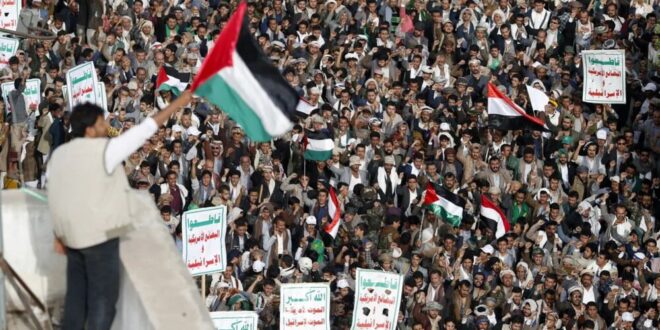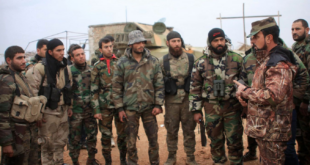Hamas is the largest Palestinian extremist Islamic group, characterized as a terrorist organization by most of Europe, but many other countries. Now it has come to the fore again after entering southern Israel this morning in a surprise attack that is still ongoing at this moment .
Hamas or the Islamic Resistance Movement”, is a Palestinian Sunni-Islamist and fundamentalist organization, created in 1987, after the beginning of the first Palestinian intifada, or rebellion, against the Israeli occupation of the West Bank and the Gaza Strip.
The founder of Hamas was Sheikh Ahmed Yassin, the leader of the Palestinian Muslim Brotherhood stationed in Gaza, writes N1 .
This extremist group originally had a dual goal – to wage an armed struggle against Israel, led by the military wing, the “Izzedin Al Qassam” brigades, and to implement social assistance programs.
Hamas labels all of Israel as an “artificial Zionist creation” and as the “cradle of Islam”. That position is more radical than the “world” position of the Palestine Liberation Organization, which recognized the sovereignty of the State of Israel in 1988.
In its fight (asymmetric warfare) against Israeli civilians, Hamas also uses suicide bombers. Peace initiatives and negotiations are rejected by Hamas as “pure waste of time” and “useless effort”.
During this Cold War period, Hamas was politically marginalized, and Israel, along with similar religious organizations, did not consider it a threat, unlike the more active socialist and secular Fatah led by Yasser Arafat.
The first clash between supporters of Hamas and Israel took place in 1989 during the Intifada, during which two Israeli soldiers were captured and killed. Israel responded by capturing Yassin and sentencing him to life imprisonment, and by deporting 400 Hamas members to southern Lebanon, which was then under Israeli occupation.
In 2014, Amnesty International published a shocking report on Hamas forces in Gaza, which stated that they committed “serious human rights violations, including kidnapping, torture and extrajudicial executions of Palestinians.”
The ideology of Hamas
Hamas’ founding charter of 1988 defines historic Palestine – including present-day Israel – as an Islamic country and rules out any lasting peace with the Jewish state.
The document also persistently attacks Jews as a people, leading to accusations that the movement is anti-Semitic.
In 2017, Hamas produced a new policy document that softened some of the views expressed and used more moderate language.
There was no recognition of Israel, but the creation of a transitional Palestinian state in Gaza, the West Bank and East Jerusalem – known as the pre-1967 borders – was officially accepted.
The document also points out that Hamas is not fighting against Jews but “occupying Zionist aggressors”.
Israel said the group was “trying to deceive the world”.
As a consequence of this, Israel and its allies in the West imposed strict economic and diplomatic sanctions on the new government led by Hamas, the “Danas” portal reports .
When the Israelis arrested the leader Sheikh Ahmed Yassin in 1989, that move led Hamas to change its way of functioning and move its headquarters to Jordan, which ten years later expelled the organization’s leaders, claiming that they had organized actions in the West Bank from Jordanian territory.
From 2001 to 2012, Hamas headquarters were located in Damascus, from where it moved to Doha, following the conflict over Bashar al-Assad’s response to the uprising in Syria.
Although in principle it rejected a peaceful solution to the conflict with Israel, Hamas gradually softened its positions, so in 2006 it participated in the elections in the Palestinian territories and indicated that it could support a solution that would include a Palestinian state within the borders of 1967.
Also, Hamas supported the agreement that Palestinian President Mahmoud Abbas and then Israeli Prime Minister Ariel Sharon reached in 2005 and agreed to a ceasefire, although sporadic clashes continued.
A year later, Hamas won a landslide victory over Fatah in elections in the Gaza Strip and the West Bank, but infighting between the two factions forced Abbas to suspend the Palestinian Authority and impose a state of emergency.
Armistice, then conflicts again
The truce that followed those clashes lasted until 2014, when Israeli Prime Minister Benjamin Netanyahu blamed Hamas for the kidnapping of three Israeli boys in the West Bank. The bodies of the boys were found not far from Hebron, and the Israelis arrested several hundred Hamas activists and leaders.
Islamic Jihad responded to the arrests with new rocket attacks, and two years later, Hamas joined the rocket attacks, so Israel launched a large-scale airstrikes operation, and soon after, a ground offensive to destroy Hamas positions. Although more than 2,000 Palestinians were killed, Hamas declared victory, reports RTS.
Israel holds Hamas responsible for all attacks emanating from the Strip, and has led three major military campaigns in Gaza that have been preceded by escalations in cross-border fighting.
In December 2008, the Israeli military launched Operation Wrought Iron to stop the rocket attacks.
During the twenty-two-day conflict, more than 1,300 Palestinians and 13 Israelis were killed.
Israel cited as the same reason the launch of Operation Pillar of Defense in November 2012, which began with an airstrike in which Ahmed Jabari, commander of the “Qassam” brigade, was killed.
In eight days of fighting, around 170 Palestinians – mostly civilians – and six Israelis died.
Hamas emerged from both conflicts militarily weakened, but with renewed support among Palestinians because it stood up to Israel and survived.
Rocket fire from Gaza intensified again in mid-June 2014, when Israel arrested many Hamas members in the West Bank while searching for three slain Israeli teenagers.
In early July, Hamas claimed responsibility for firing rockets into Israel for the first time in two years.
Since 2014, there have been regular outbreaks of violence that have ended in ceasefires brokered by Egypt, Qatar and the United Nations and have not escalated into open war.
Despite the pressure of the blockade, Hamas maintained power in Gaza and continued to build an arsenal of rockets.
Attempts at reconciliation with Fatah (the largest faction of the Palestine Liberation Organization) also failed.
Hamas – terrorists or not?
Hamas is listed as a terrorist organization by the governments of Israel and the United States, along with close Western allies such as Canada, Japan and the EU, and Arab ones such as Jordan and Egypt. Other Western countries such as the United Kingdom, Australia and New Zealand only have al-Qassam brigades, Hamas’s military wing, on the list of terrorist groups, reports Nova.rs.
On the other hand, Eastern powers such as Russia, China, Iran and Turkey reject such a classification and recognize Hamas as the legitimate and democratically elected representative of the Palestinians. Analysts agree that Hamas has a terrorist past, but that such practices were abandoned in 2006.
 Eurasia Press & News
Eurasia Press & News



